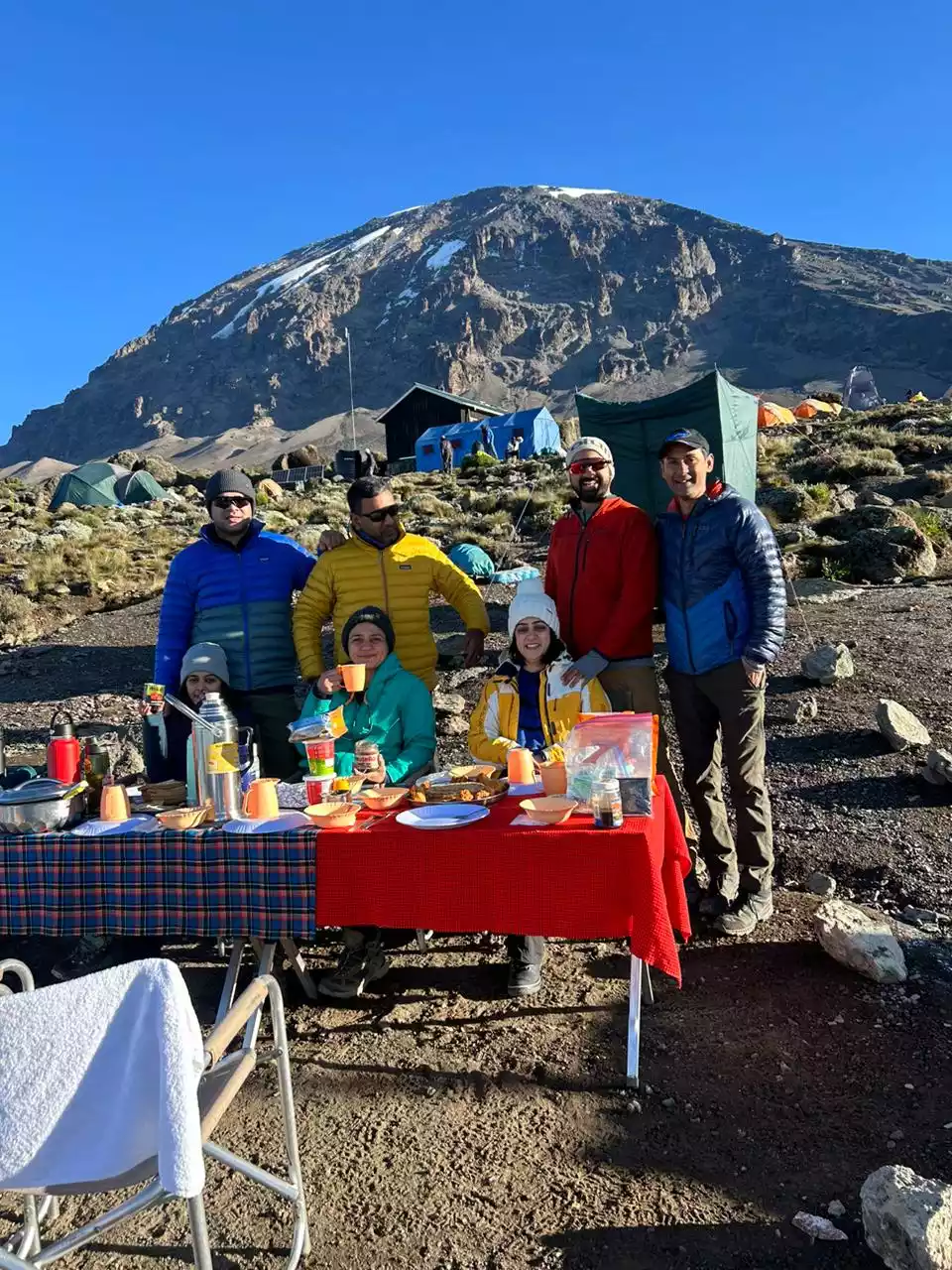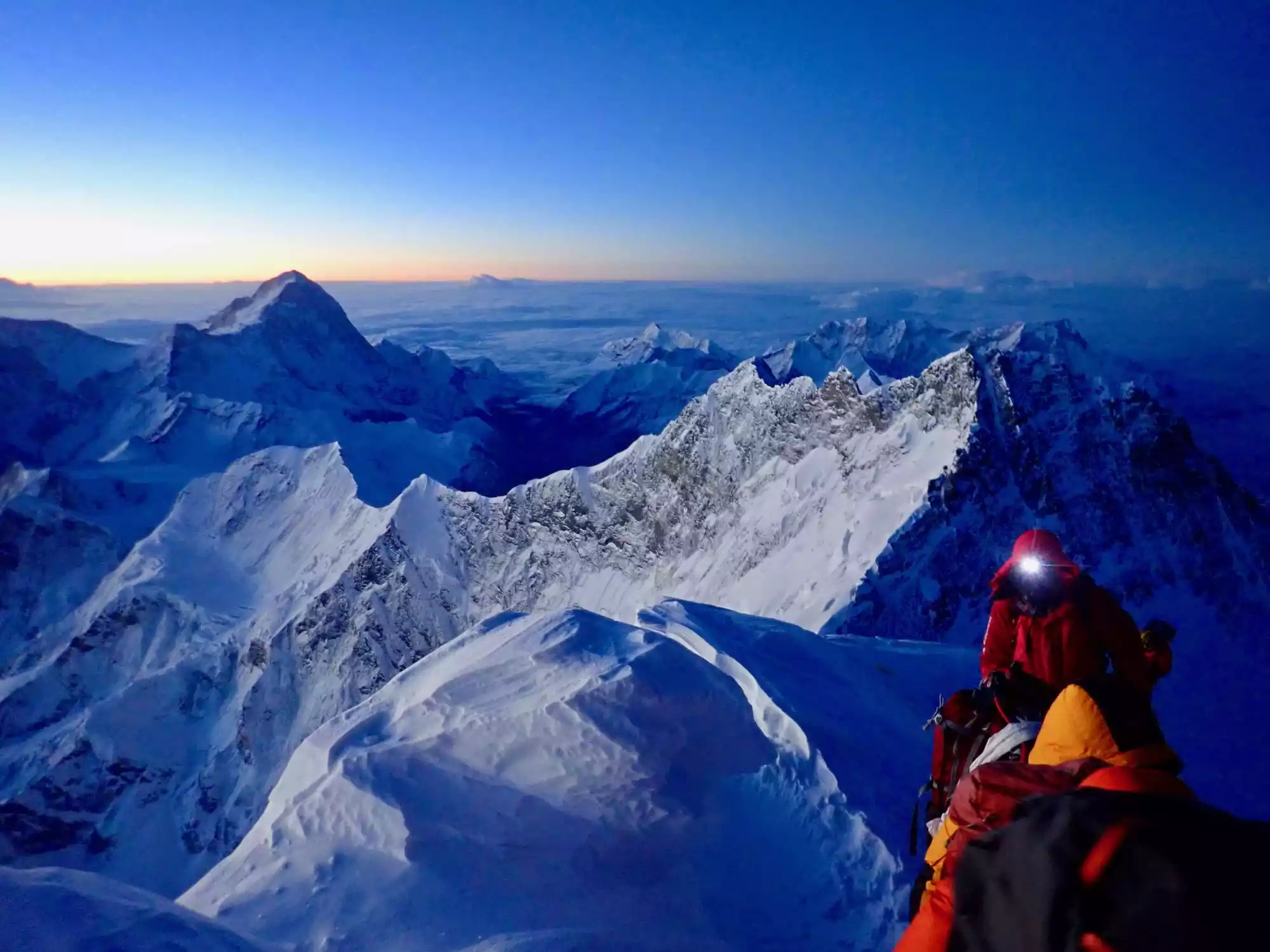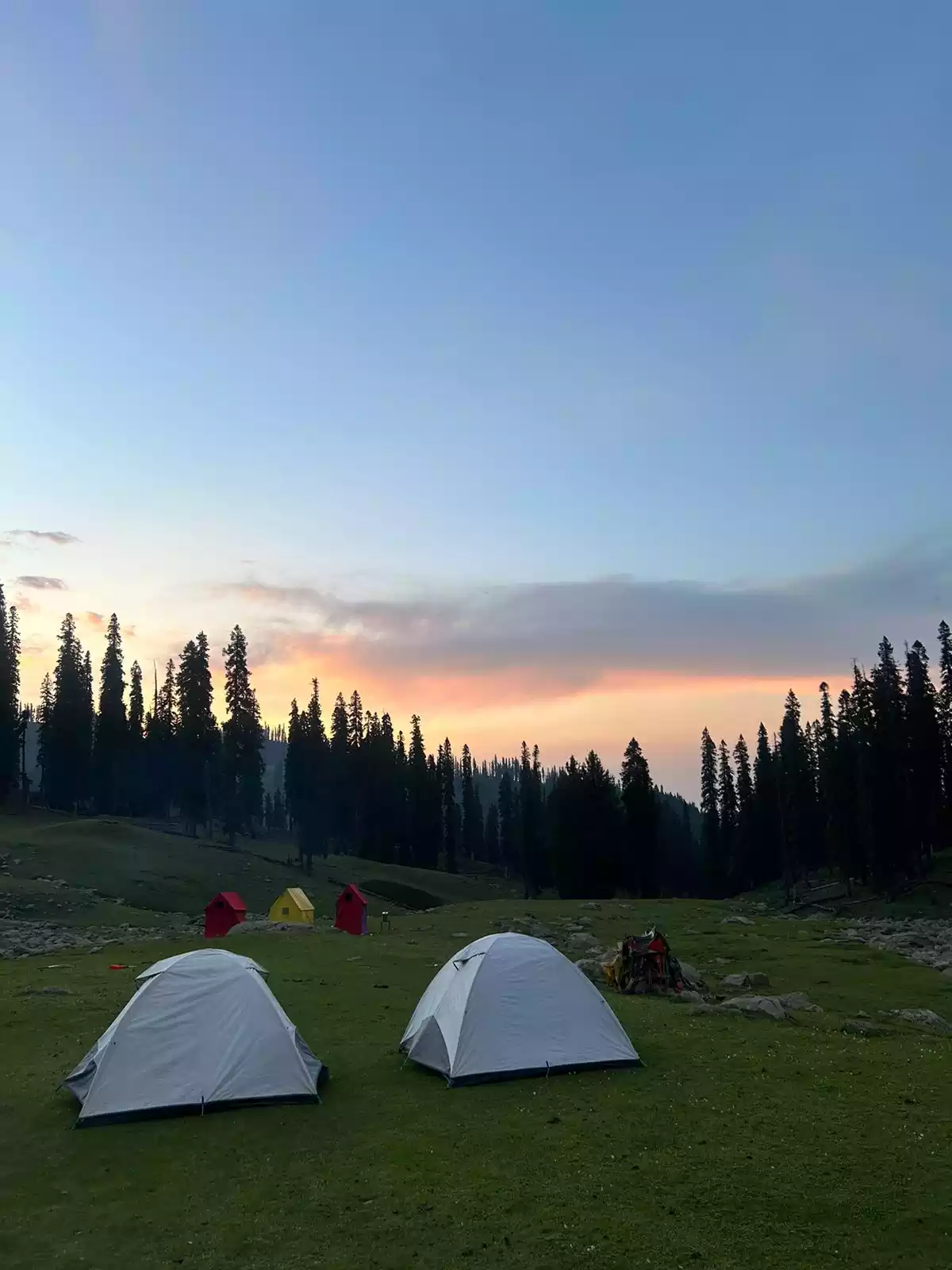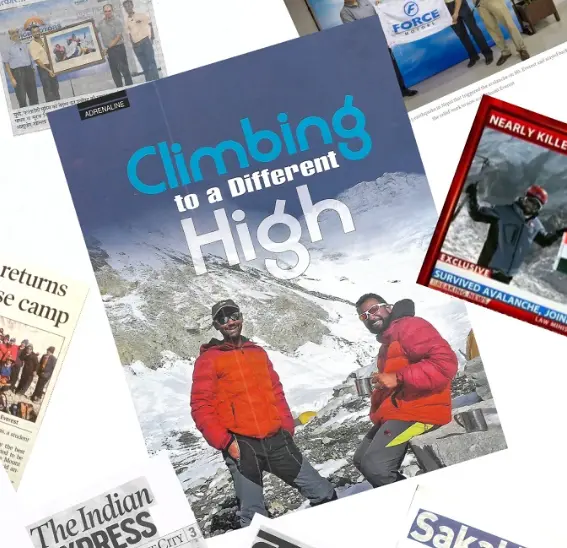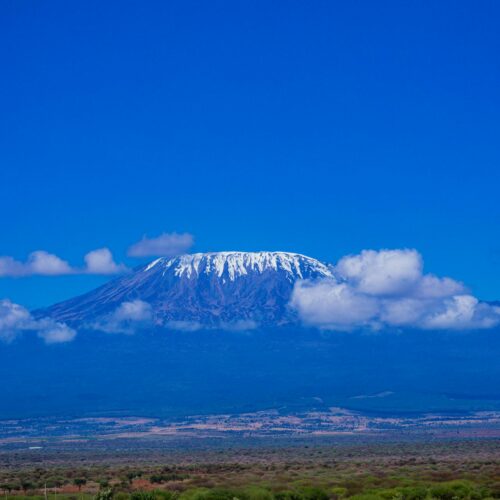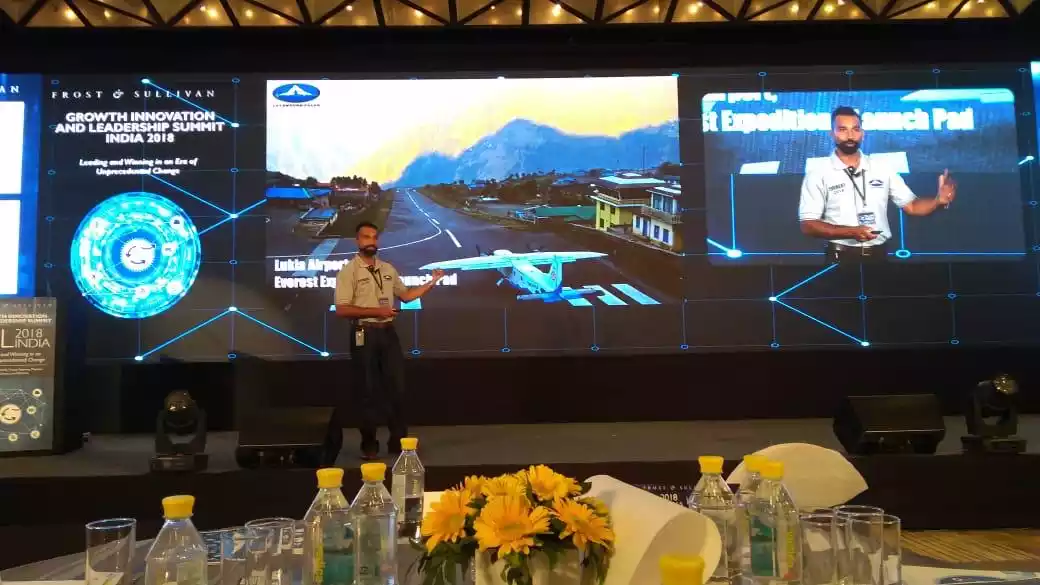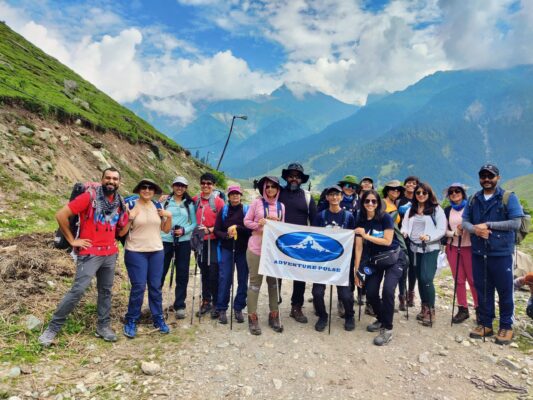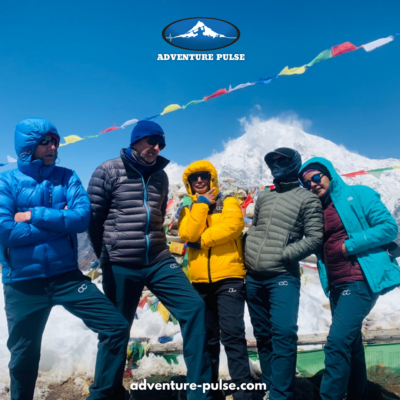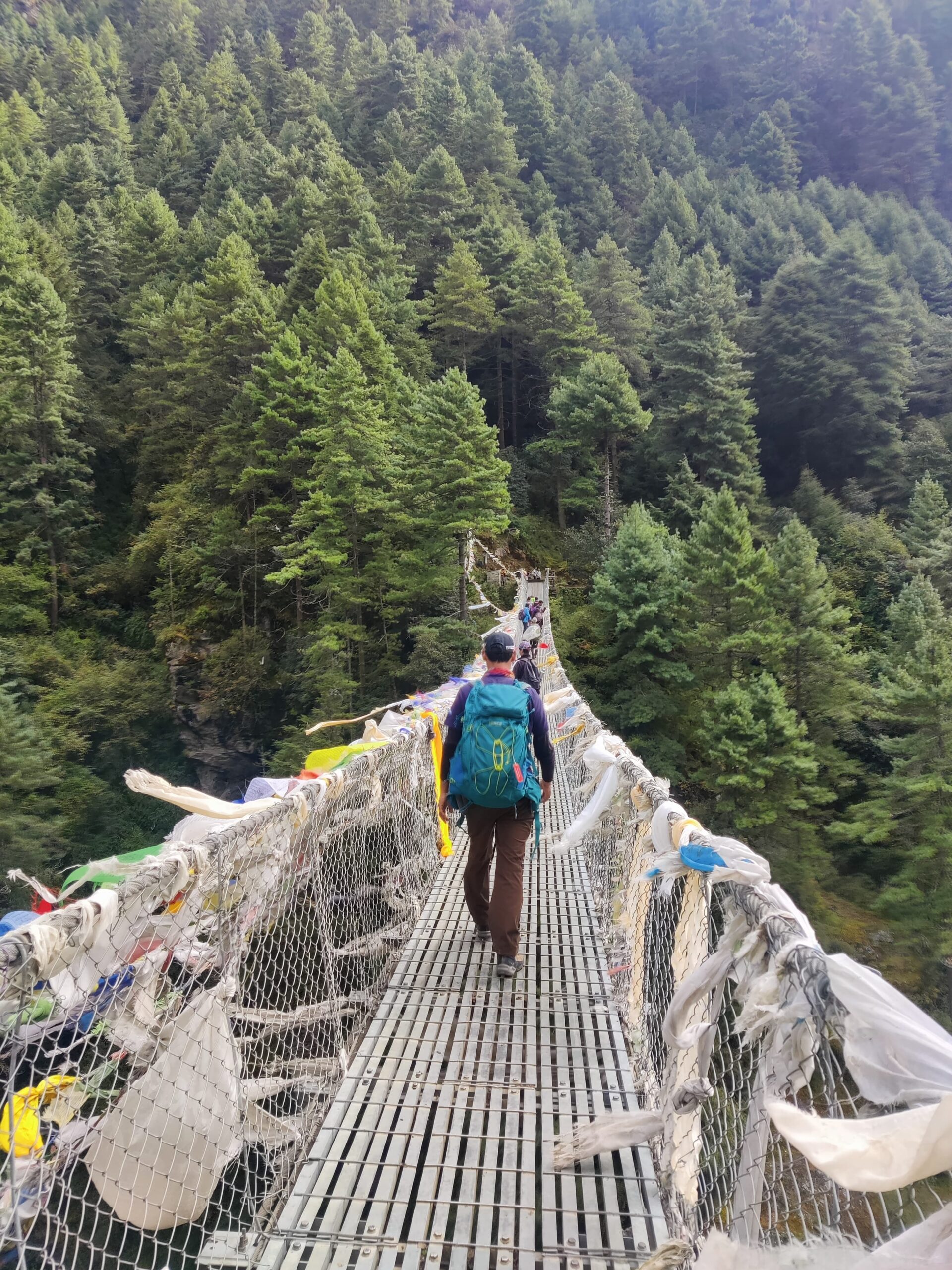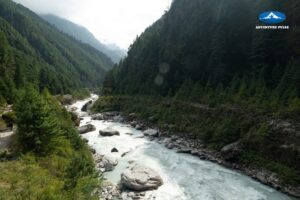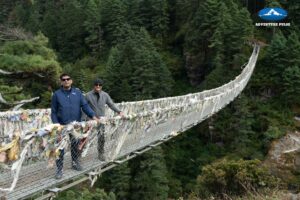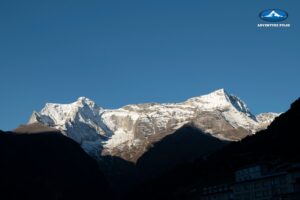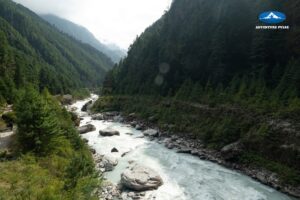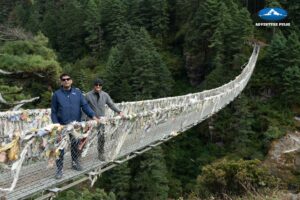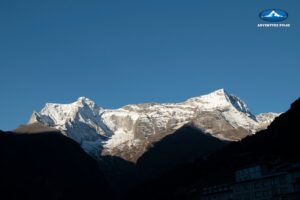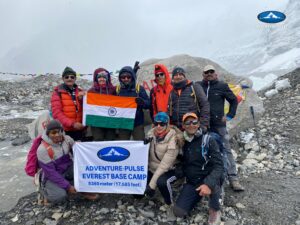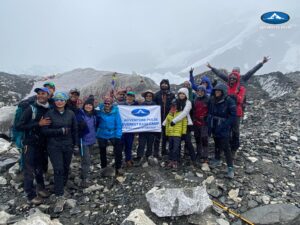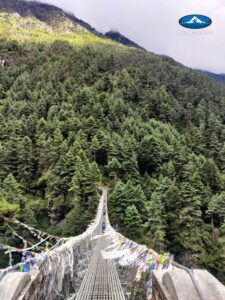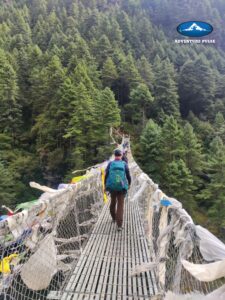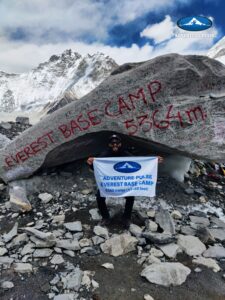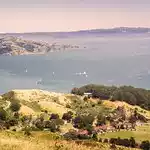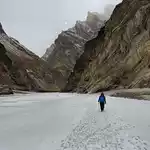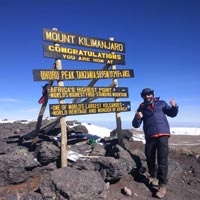Brief Itinerary
- Day 1 - Arrival in Kathmandu
- Day 2 - Drive from Kathmandu to Ramechap - Fly to Lukla (2810m) and trek to Phakding (2660m)
- Day 3 - Trek to Namche Bazar (3440m)
- Day 4 - Rest and acclimatize in Namche Bazar, hike to Khumjung (3900m)
- Day 5 - Trek to Debuche via Tengbuche Monastery (3870m)
- Day 6 - Trek to Dingboche (4252m)
- Day 7 - Acclimatise at Dingboche with a hike to Nangakarshang (5010m)
- Day 8 - Trek to Lobuche (4930m)
- Day 9 - Trek to Everest Base Camp (5360m) and stay at Gorakhshep
- Day 10 - Trek to Kalapathar and stay at Pheriche (4200m)
- Day 11 - Trek to Namche Bazar (3440m)
- Day 12 - Descend to Lukla (2810)
- Day 13 - Fly back to Kathmandu
- Day 14 - Buffer day for bad weather
- Day 15 - Depart from Kathmandu
Inclusions & Exclusions
Trip Cost Includes:
At Adventure Pulse, we have 3 different packages you can choose from depending on your preference : STANDARD - DELUXE -LUXURY
- 2 night’s hotel stays in Kathmandu (1 night before and 1 night after) on bed & breakfast plan. (Not included in standard package).
- 1 night stay for buffer day on bed & breakfast plan (can be anywhere depending on where the buffer needs to be used). (Not included in standard package).
- Group Airport pick up and drop during the standard itinerary. (Not included in standard package).
- Experienced & Qualified Guide for the trek.
- Trekking permit.
- National Park Permit.
- Return commercial Flight fare from Ramechaap – Lukla for members with 11 kg check in baggage allowance + 2 Kg handbag.
- Road transport from Kathmandu to Ramechaap and back for the group.
- Domestic airport departure taxes.
- Tea house accommodation during the trek on twin sharing with acess to common bathrooms.
- 3 meals (1 order = 1 meal) and 3 hot beverages (tea, milk, hot water, coffee) during the trek (not included in standard package).
- Porters for carrying main/duffel bags during the trek upto 12 kgs.
- Rooms with attached bathroom on twin sharing. (Included only in Luxury package). *Not available in Lobuche and Gorakhshep*.
Trip Cost DOES NOT Include:
- International Flights to Nepal and back.
- Lunch & Dinner while in Kathmandu.
- Beverages and alcoholic drinks.
- Mineral or Boiled Drinking water on the trek.
- Tea / coffee ordered more than 3 times a day.
- Extra snacks ordered by clients outside regular meals.
- Emergency medical evacuation by Helicopters.
- Excess baggage on Lukla flights.
- Excess baggage to be carried by porters beyond specified weight limit).
- Tips for staffs (mandatory)
- Personal expenses and extra services like WiFi / hot shower.
- Helicopter cost / charter plane cost in case of flight cancellation or evacuation.
- Any Personal clothing or equipment.
- Cost arising out of extension or reduction or change of itinerary, due to medical/personal reasons / force major etc.
- Upgrade to single occupancy in hotel or tea houses.
- Individual airport pickups and drops.
- Any expenses arising out of delayed flights, bad road conditions. any government or authoritative orders not in the control of the trek operator.
Things to carry
Download as PDFExtreme temperature variations, high altitude, snow glare & proximity to sun are certain factors which necessitate the need for proper mountaineering equipment. In order to enjoy your experience in the mountains, we have recommended that you carry the following with you.
Note: If you are unable to procure any of the mentioned items, then suitable arrangements will be made so that the same can be either bought or rented in Kathmandu based upon actuals.
Apparel
- Thermal Inners - At least 1 pair of Top and Leggings
- 6 to 8 t-shirts or long-sleeve shirt (cotton / dryfit)
- 2-3 pairs of trekking pants (no denim!)
- 1 Sweater/Sweatshirt
- 1 Fleece Jacket
- 1 Down Jacket
- 1 Waterproof Layer like raincoat or wind-cheater
- 1 pair of hiking boots
- 1 pair of comfortable sandals/floaters/sneakers
- 8-9 pairs of cotton socks (for day)
- 2 pairs of thick/woollen socks (for night)
- Gloves - liner and outer
- Sun hat
- Woollen cap
- Buff
Accessories
- Duffel bag / Rucksack for off loading. Maximum 12 kgs allowed.
- Daypack / Backpack (20-30L capacity)
- Sleeping bag (can be bought or rented in Kathmandu)
- 2x 1L Bottles (to carry drinking water)
- Torch + Batteries / Headlamp
- Knee/Ankle/Wrist Guards
- Trekking Poles
- Sunblock
- Sunglasses
- Moisturiser
- Hand Sanitiser
- Personal Medical Kit
- Personal Toiletries Kit and toilet paper
- Trail snacks
- Power bank
Fitness
Download as PDF- There are three main aspects of training to focus on – strength training, cardiovascular training, and trekking + trekking alternatives.
- Strength training involves training different muscle groups, so that they can become stronger. There are different exercises for each muscle group, and working them all out 2x-3x a week should be enough to help you get comfortable trekking.
- Legs / lower body - exercises like squats, glute bridges, step ups and leg presses with help you develop stronger muscles in the lower body.
Core - Exercises like planks, bicycle crunches and leg raises can help with core stability; Pilates is also a core-intensive type of workout that will help.
Upper body - Bodyweight exercises like push-ups, pull-ups and dips will help develop these muscles. You can also use resistance bands or light weights to develop them further.
- It’s vital to do plenty of cardio training before your trek, so that you can get the most out of your experience
- Running - This is the most recommended form of cardio activity, as it activates a lot of the same muscles as trekking. Being able to run 10km in 60 minutes will allow you to get the most out of your trek.
Cycling / Swimming - If you have knee issues, or don’t enjoy running, you can also opt for cycling and swimming. Being able to cycling 30-50km or swim for 30-40 minutes, thrice a week, should be good to help you with treks like EBC.
HIIT training / Crossfit - Another option to level up your cardio training is to opt for high intensity aerobic exercises like HIIT or Crossfit, 2-3 times a week
The aim is to get your heart rate up, so you do not get winded on long days of trekking
- Hiking
Try to get outdoors and go for a hike on the weekends! Uphill trails of 4-8 kilometres are will help you get used to trekking. Make it a point to carry a loaded backpack, and walk in your trekking shoes.
- Hiking Alternatives
Climbing stairs, and using the treadmill or stairmaster on an incline, will help prepare you for treks. Make it a point to carry a loaded backpack so that you can get used to the extra weight; and use your trekking boots, so that you can break them in and walk comfortably.
- If you’re confused with all this information, no need to worry! The most important thing with training is consistency, and staying injury-free. Your training week should ideally have
Strength training - 3 sessions
Cardio training - 3 sessions
Hiking - 1 long session, best on the weekends
Rest and stretching - at least 1 day
FAQs
Everest Base Camp
What kind of physical shape do I need to be in to trek to Everest Base Camp?
This trek into the Everest region is strenuous but does not require any previous trekking, mountaineering or technical climbing experience; only that you be in good physical conditioning. The trek requires you to be able to hike for 4-6 hours over hilly terrain with a light day pack for 11 days. Good cardio-vascular conditioning and exercises for muscles that are used to hiking will make your trip much more enjoyable. Our goal is to climb Kala Patthar at 18,700 feet, and walk on broken glacial moraine all the way into Base Camp, at 17,500 feet. You will spend 11 days in a land where life is simple, trails are steep and the air is thin. Begin training today if you want to make the most from this trip.
What are the start and end points of this trek?
Your itinerary starts from Kathmandu, the capital city of Nepal. We receive you at the Kathmandu International Airport and transfer you to your hotel located in Thamel, the tourist district of the city. You spend this day in the city. However, please note that you won't be spending the night in Kathmandu technically. The team will be leaving post midnight around 1 am, to drive to the Ramechap airport and catch an early morning flight to Lukla. Usually we take an early morning flight as the weather is most favorable that time to land in Lukla. However, this completely depends on the weather, not just on the given day but the previous days as well. The airlines have a policy of clearing any backlogs before they fly the existing bookings. For example if you are scheduled to fly today, but the previous day due to bad weather the flights got cancelled, the airline will first clear the previous days backlog. Hence, you need to be mentally prepared for long waiting time, and that the Lukla flight will be a bit of an adventure. Rest assured our team will do everything that's needed to make your journey comfortable.
We will be flying a small aircraft from Ramechaap to Lukla (Duration 30 mins). Lukla is from where we start trekking.
After completing our trek, we again fly back from Lukla to Ramechaap, trying to keep an additional day as buffer in case of delays due to bad weather. After a day spent in Kathmandu, we transfer you to the International Airport, which marks the end of your itinerary.
What are the accommodations like in Kathmandu and while trekking?
Do I need any special equipment or climbing gear during this trek?
No, as the trek does not involve any technical climbs, no special climbing equipment is required. A rucksack (60-70 lts), good pair of trekking shoes, a warm jacket and a pair of thermals are good enough. Please refer to the "List of Items" on our website, which you need to carry.
https://adventure-pulse.com/trek/everest-base-camp-trek/#list
What is the communication system available on the way?
There are different ways to be in touch with your Family. You can purchase a local Prepaid SIM Card at the International airport. We recommend you buy Ncell as that has better connectivity in the Everest Valley.
If you have a Mobile with International Roaming on it, your Phone will work till Day 3 of the trek so you can easily be in touch with your Family. Post which, most of the tea Houses we stay in have the facility of purchasing Wifi on a 24 hour cycle.
You can call your family every day during the course of the trek. Although the prices for these facilities may vary from a minimum of 500 Nepali rupees to 1200 Nepali rupees for a 24 hours of cycle.
What about high altitude acclimatisation?
You will notice in the Itinerary that there are 2 exclusive days for acclimatization at Namche & Dingboche (11,400 feet & 14,200 feet). These are rest days to allow our bodies to adapt to the High Altitude.
Can you give an example of a typical breakfast, lunch and dinner on the way?
The Meals are freshly prepared in the Tea Houses that we stay in. Typical Days Meals – • Breakfast – Porridge, Two eggs, toast with jam or Butter and Hot tea/coffee/ Chocolate.
• Lunch – Rice with Lentils & Vegetables commonly known as Dal Bhat Tarkari, Choice of Fried Rice or Noodles or even Pizza, burgers etc.
• Dinner – Choice of Soup, Mashed potatoes, Choice of Noodles/fried Rice and Hot Drinks.
Please note based on which package you have purchased, meals are included during the trek. Based on the policy of one order one meal. Extra meal orders are charged directly to the participant.
One order one meal is applied to beverages as well. (Applicable only for tea, milk, coffee, hot water. Any other drinks purchased from menu have to be borne by the trekkers).
Will I be able to take showers/bath on the course of the trek?
Yes there are hot water showers available on most of these tea houses that we would be staying in. You can avail of these facilities at an average rate of 500 or 1000 Nepali rupees for a 10 minute shower. But usually after the 3rd/4th Day, you yourself would want to avoid it because of dropping temperatures and biting cold outside. We usually don't recommend the above to ensure you don't fall sick during the journey.
What are the medical/emergency precautions taken en-route?
Adventure Pulse requires each of its clients to provide a medical fitness document before joining the group. Our crew is well qualified for any First-Aid procedures if required on the way. In addition a comprehensive Medical & first Aid kit is carried at all times. There are Medical stations available en-route in case of an emergency and also Helicopter evacuation procedures are available on actuals. When we ascend above 2500 meters our bodies have to acclimatize to the decreasing amount of the oxygen available. To allow our bodies to adjust and to avoid any such situations, we have added acclimatization and rest days in the itinerary. Personal Adventure Travel Insurance can also be purchased, which includes helicopter evacuation in case of a medical emergency. Buying insurance for Everest Base Camp Trek is optional.
What would a typical day be like?
You will be woken in the morning by 5:45 to 6:00 am. Breakfast and hot beverage would usually be served in the dining room of the tea house by 6:30 am. Before breakfast you pack your gear into your duffel bags or rucksacks which are then taken by the porters and will not usually be available to you until the next teahouse that afternoon. We are usually on the trail between 7.00 am and 7.30 am to avoid the heat of the noon and to reach our destination by lunch time. Following a good morning's walk, we stop for tea at around 11 am. This is usually a 20-30 minute break to allow for the trekkers to relax and catch their breath. The subsequent walk will be towards the lunch place. Where we take another break to have our lunch. Post lunch the next destination is usually our final tea house for the day. You can expect to reach by around 2 pm to 3 pm depending on what time you start, the pace of the group and the weather. Once we have our next destination, we will hand over your room keys to you. Post which you can rest and chill until dinner is served. You can explore the surrounding area and villages or sit and chat with the crew and local people. Dinner is usually served around 6 pm to 7 pm. Trekking evenings afford some of the best memories of your trek, whether it is talking, playing cards, chatting with the crew or joining in some singing and dancing with the local people, it is always a special time.
What happens in terms of flight cancellations due to bad weather?
Weather is very un-predictable, especially in high-altitude and can change within minutes. In case we encounter bad weather, we have kept 1 buffer day in the itinerary which would help us complete the trek. In case the weather remains unfavourable and the Ramechaap – Lukla – Ramechaap flights are delayed beyond our buffer day, a helicopter can be chartered, at an extra cost to be borne by the trekkers, in order to reach the destination. Please note – this is optional and if exercised will have to be paid for by the clients.
Featured Blog Posts
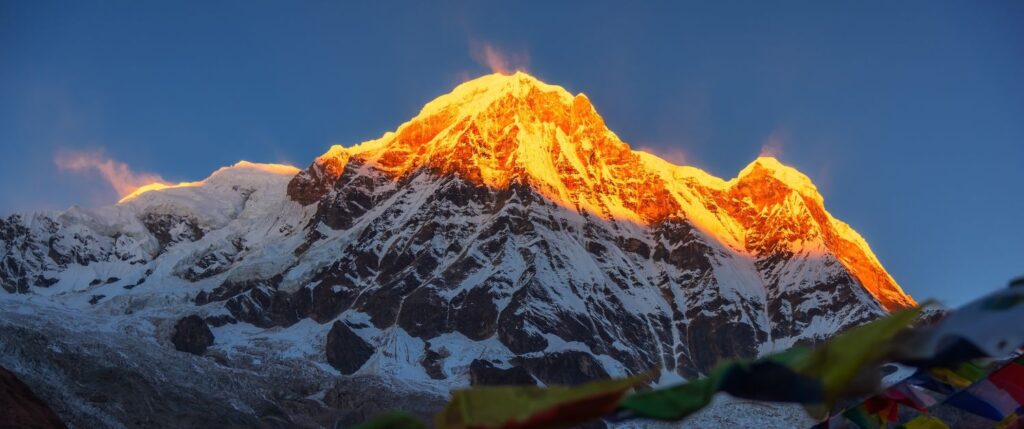 Everest Base Camp Vs Annapurna Base Camp: How to Choose ? Pt – 2 - In Part 1 of the Everest Base Camp versus Annapurna Base Camp series, we explored key guidelines and general factors…
Everest Base Camp Vs Annapurna Base Camp: How to Choose ? Pt – 2 - In Part 1 of the Everest Base Camp versus Annapurna Base Camp series, we explored key guidelines and general factors… 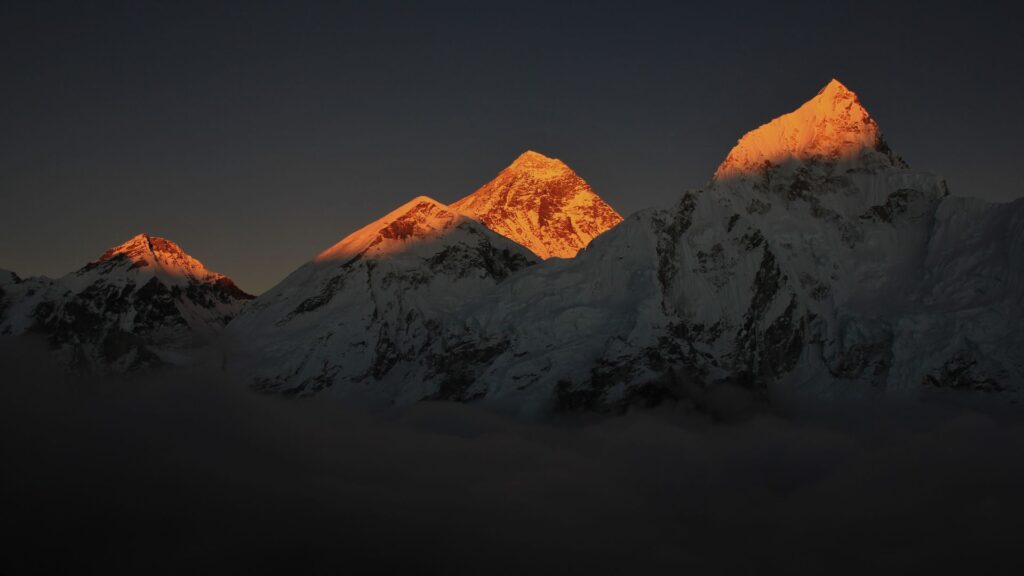 Everest Base Camp Vs Annapurna Base Camp: How to choose? Pt-1 - Nepal offers some of the world’s most breathtaking trekking routes. Everest Base Camp (EBC) and Annapurna Base Camp (ABC) treks…
Everest Base Camp Vs Annapurna Base Camp: How to choose? Pt-1 - Nepal offers some of the world’s most breathtaking trekking routes. Everest Base Camp (EBC) and Annapurna Base Camp (ABC) treks…  Climbing Lobuche Peak – Journey with Everest Base Camp Trek - Trekking and climbing in Nepal Nepal is a hub for adventurer seekers. Trekkers and mountaineers alike, come into the country…
Climbing Lobuche Peak – Journey with Everest Base Camp Trek - Trekking and climbing in Nepal Nepal is a hub for adventurer seekers. Trekkers and mountaineers alike, come into the country… 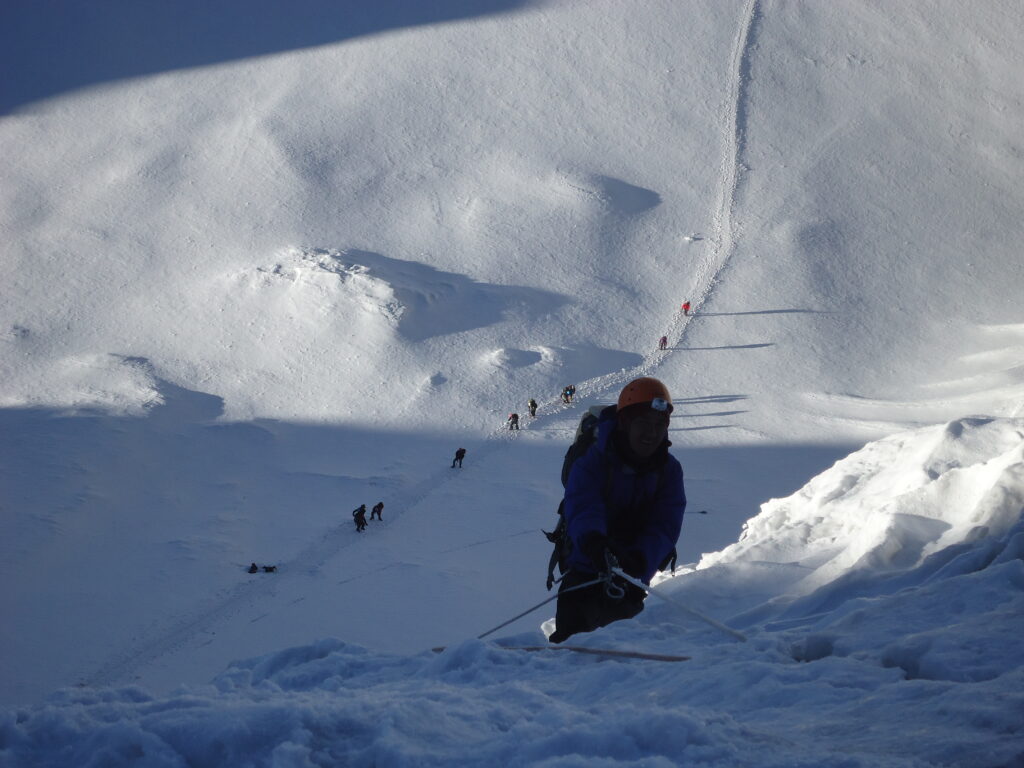 Lobuche Peak Nepal 2025- Ultimate guide for Climbers Pt-1 - Climbing in Nepal Nepal, the land of the Himalayas, invites mountaineers and adventure seekers. Nestled between India and Tibet, Nepal…
Lobuche Peak Nepal 2025- Ultimate guide for Climbers Pt-1 - Climbing in Nepal Nepal, the land of the Himalayas, invites mountaineers and adventure seekers. Nestled between India and Tibet, Nepal…

